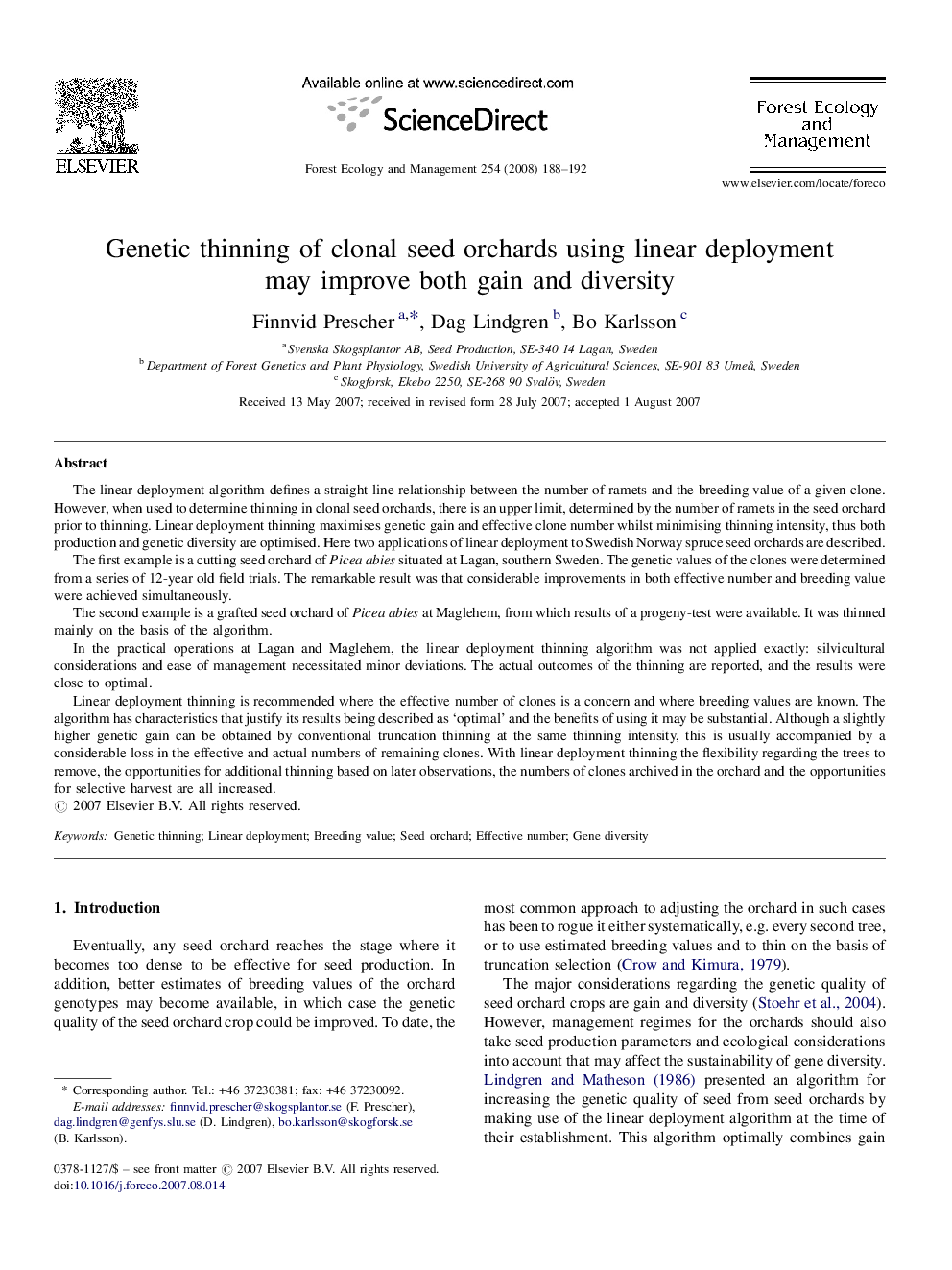| Article ID | Journal | Published Year | Pages | File Type |
|---|---|---|---|---|
| 90101 | Forest Ecology and Management | 2008 | 5 Pages |
The linear deployment algorithm defines a straight line relationship between the number of ramets and the breeding value of a given clone. However, when used to determine thinning in clonal seed orchards, there is an upper limit, determined by the number of ramets in the seed orchard prior to thinning. Linear deployment thinning maximises genetic gain and effective clone number whilst minimising thinning intensity, thus both production and genetic diversity are optimised. Here two applications of linear deployment to Swedish Norway spruce seed orchards are described.The first example is a cutting seed orchard of Picea abies situated at Lagan, southern Sweden. The genetic values of the clones were determined from a series of 12-year old field trials. The remarkable result was that considerable improvements in both effective number and breeding value were achieved simultaneously.The second example is a grafted seed orchard of Picea abies at Maglehem, from which results of a progeny-test were available. It was thinned mainly on the basis of the algorithm.In the practical operations at Lagan and Maglehem, the linear deployment thinning algorithm was not applied exactly: silvicultural considerations and ease of management necessitated minor deviations. The actual outcomes of the thinning are reported, and the results were close to optimal.Linear deployment thinning is recommended where the effective number of clones is a concern and where breeding values are known. The algorithm has characteristics that justify its results being described as ‘optimal’ and the benefits of using it may be substantial. Although a slightly higher genetic gain can be obtained by conventional truncation thinning at the same thinning intensity, this is usually accompanied by a considerable loss in the effective and actual numbers of remaining clones. With linear deployment thinning the flexibility regarding the trees to remove, the opportunities for additional thinning based on later observations, the numbers of clones archived in the orchard and the opportunities for selective harvest are all increased.
